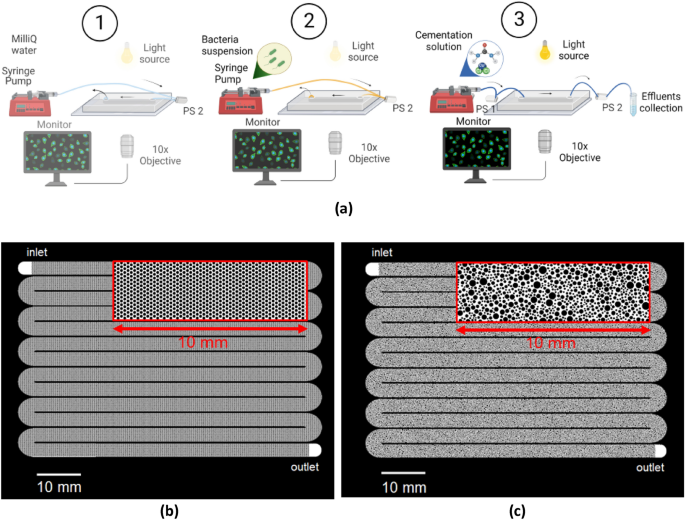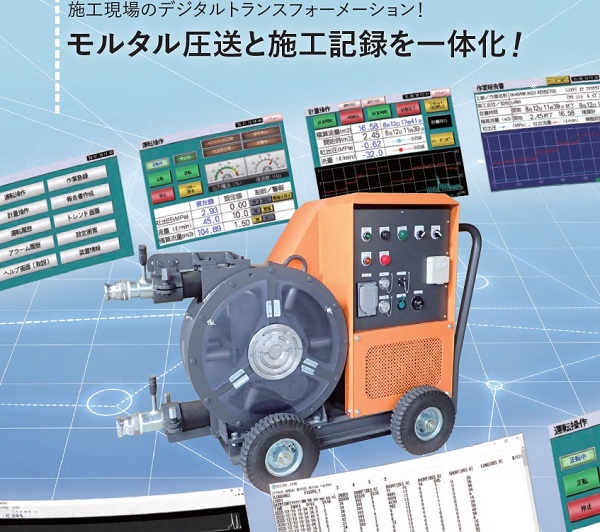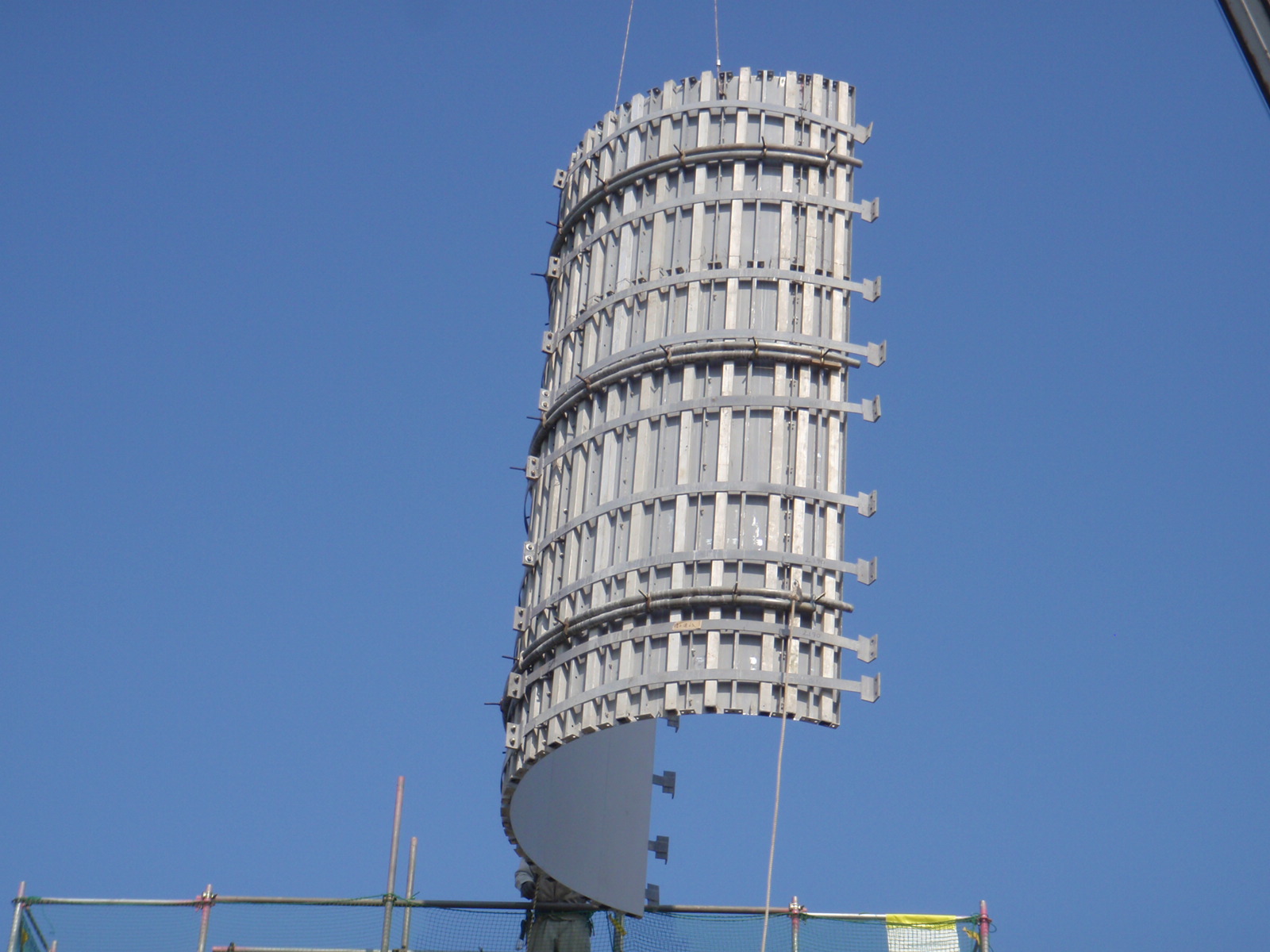2022-12-05 スイス連邦工科大学ローザンヌ校(EPFL)
チップはクレジットカードほどの大きさで、表面には端から端まで1メートル、人間の髪の毛ほどの太さの流路が刻まれている。研究者は、流路の片方に溶液を注入し、タイムラプス顕微鏡を使って、数時間にわたる溶液の挙動を観察することができる。医学者は同様のチップを、動脈がどのように詰まるか、薬がどのように血流に広がるかなどのヘルスケア用途に、環境エンジニアは飲料水中のバイオフィルムや汚染物質の研究に応用してきた。
科学者のチームが、このチップを再利用して、新しい種類のバイオセメントの形成に関わる複雑な輸送反応現象を理解することに成功した。
バイオセメント溶液をさまざまな種類の砂に似せたマイクロ流体チップに注入して、鉱物の形成と流れの反応を観察した。砂の種類のほか、カルシウムと尿素というバイオセメントの主成分も同じにした。このチップは体積が小さいので、効率的なバイオセメンテーションプロトコルを設計するために、異なる混合物で複数の実験を実施することができる。
その小型化された容積のために、チップは、効率的なバイオセメンテーションプロトコルを設計するために、異なる混合物で複数の実験を行うことを可能にしてくれる。
この研究は、バイオセメントの形成を1メートルの長さでリアルタイムに調べた初めてのもので、亀裂の修復、炭素貯蔵、土壌浄化など、多くの潜在的用途にとって重要である。
<関連情報>
- https://actu.epfl.ch/news/chip-lets-scientists-study-biocement-formation-in-/
- https://www.nature.com/articles/s41598-022-24124-6
長さ1mの反応経路におけるマイクロ流体研究により、媒体の構造的不均質性がMICPによるバイオセメンテーションをどのように形成しているかが明らかになった Microfluidic study in a meter-long reactive path reveals how the medium’s structural heterogeneity shapes MICP-induced biocementation
Ariadni Elmaloglou,Dimitrios Terzis,Pietro De Anna & Lyesse Laloui
Scientific Reports Published:15 November 2022
DOI:https://doi.org/10.1038/s41598-022-24124-6

Abstract
Microbially induced calcium carbonate (CaCO3) precipitation (MICP) is one of the major sustainable alternatives to the artificial cementation of granular media. MICP consists of injecting the soil with bacterial- and calcium-rich solutions sequentially to form calcite bonds among the soil particles that improve the strength and stiffness of soils. The performance of MICP is governed by the underlying microscale processes of bacterial growth, reactive transport of solutes, reaction rates, crystal nucleation and growth. However, the impact of pore-scale heterogeneity on these processes during MICP is not well understood. This paper sheds light on the effect of pore-scale heterogeneity on the spatiotemporal evolution of MICP, overall chemical reaction efficiency and permeability evolution by combining two meter-long microfluidic devices of identical dimensions and porosity with homogeneous and heterogeneous porous networks and real-time monitoring. The two chips received, in triplicate, MICP treatment with an imposed flow and the same initial conditions, while the inlet and outlet pressures were periodically monitored. This paper proposes a comprehensive workflow destined to detect bacteria and crystals from time-lapse microscopy data at multiple positions along a microfluidic replica of porous media treated with MICP. CaCO3 crystals were formed 1 h after the introduction of the cementation solution (CS), and crystal growth was completed 12 h later. The average crystal growth rate was overall higher in the heterogeneous porous medium, while it became slower after the first 3 h of cementation injection. It was found that the average chemical reaction efficiency presented a peak of 34% at the middle of the chip and remained above 20% before the last 90 mm of the reactive path for the heterogeneous porous network. The homogeneous porous medium presented an overall lower average reaction efficiency, which peaked at 27% 420 mm downstream of the inlet and remained lower than 12% for the rest of the microfluidic channel. These different trends of chemical efficiency in the two networks are due to a higher number of crystals of higher average diameter in the heterogeneous medium than in the homogeneous porous medium. In the interval between 480 and 900 mm, the number of crystals in the heterogeneous porous medium is more than double the number of crystals in the homogeneous porous medium. The average diameters of the crystals were 23–46 μm in the heterogeneous porous medium, compared to 17–40 μm in the homogeneous porous medium across the whole chip. The permeability of the heterogeneous porous medium was more affected than that of the homogeneous system, while the pressure sensors effectively captured a higher decrease in the permeability during the first two hours when crystals were formed and a less prominent decrease during the subsequent seeded growth of the existing crystals, as well as the nucleation and growth of new crystals.



